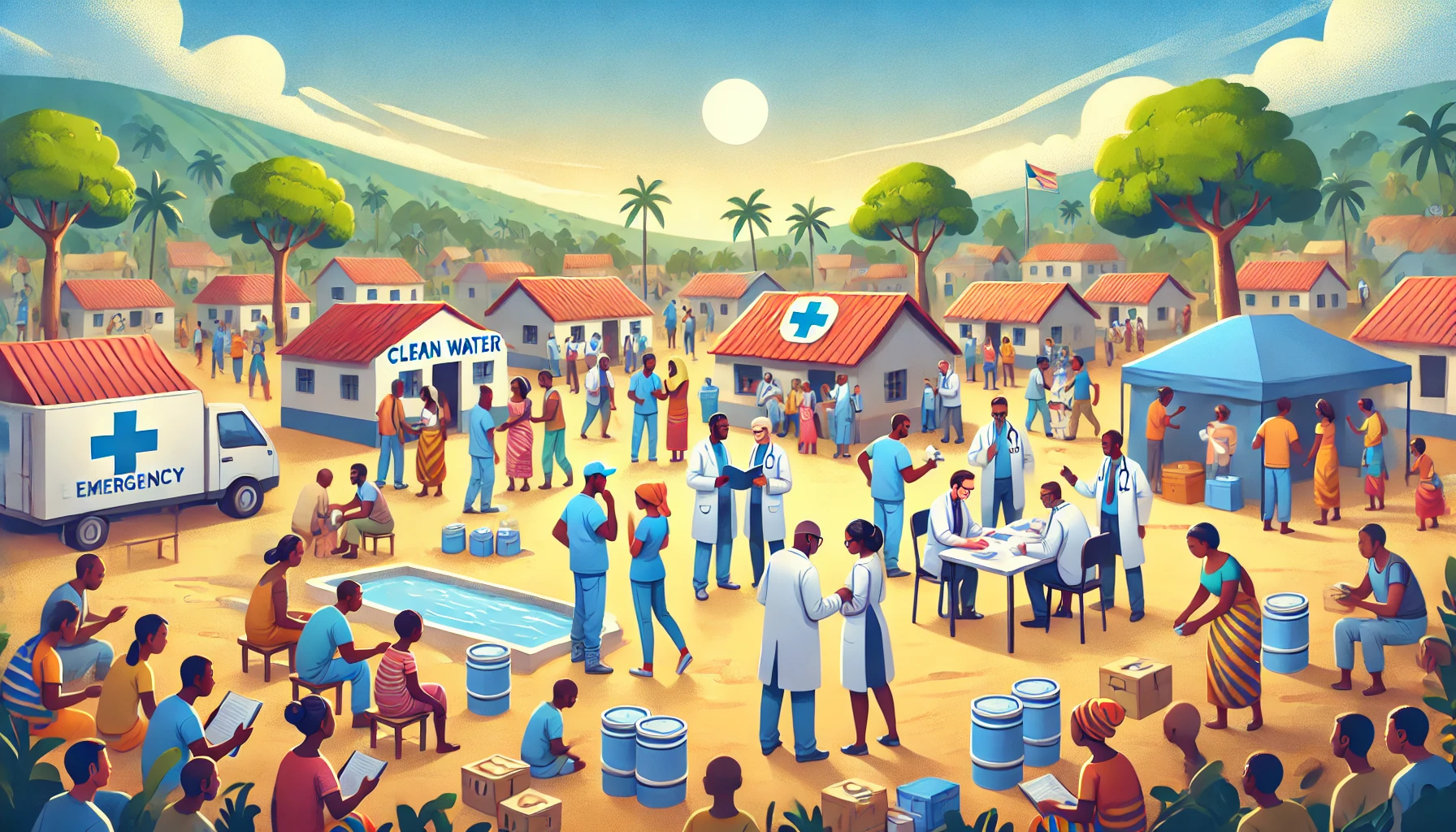Strengthening Local Partnerships for Effective Health Emergency Preparedness
The WHO’s "community protection" framework emphasizes empowering local communities to play an active role in health emergency preparedness, response, and recovery, ensuring equity and resilience. This approach promotes collaboration across sectors to safeguard health, livelihoods, and social well-being during crises.

The World Health Organization (WHO), in collaboration with several partner agencies, has introduced the concept of "community protection" as part of its broader Health Emergency Preparedness, Response, and Resilience (HEPR) framework. This initiative aims to address significant gaps in global health emergency management, which became glaringly evident during the COVID-19 pandemic. Research teams from institutions including the International Federation of Red Cross and Red Crescent Societies (IFRC) and the United Nations Children's Fund (UNICEF) contributed to the development of this framework. The pandemic not only exposed the deep inequities in health systems across nations but also revealed the eroding trust in governmental responses. As many countries struggled with multiple crises simultaneously, the need for a more robust and community-centered health emergency response became apparent. WHO’s HEPR framework seeks to offer an integrated and systematic approach to strengthen global health emergency preparedness by focusing on five core subsystems: collaborative surveillance, community protection, scalable clinical care, access to medical countermeasures, and emergency coordination.
Communities at the Center of Emergency Response
Community protection, a crucial pillar of this framework, recognizes the importance of local communities in both bearing the brunt of health emergencies and acting as essential participants in the response. The concept emphasizes that the most effective emergency responses come from empowering communities, utilizing their inherent strengths, and involving them in decision-making processes. This approach is a significant departure from the traditional top-down methods of emergency management, where local populations are often seen as passive recipients of aid. Instead, WHO argues that these communities, with their localized knowledge and social networks, must play an active role in preparedness, response, and recovery.
Building Trust Through Community Engagement
Three primary objectives shape the framework of community protection. First, there is a focus on risk communication, community engagement, and managing infodemics – the overabundance of both accurate and inaccurate information that often accompanies public health emergencies. This aspect is vital for building trust between emergency responders and local populations, ensuring that communities are well-informed and actively involved in preventive actions. For example, during health crises, early engagement with communities, including listening to their concerns and incorporating local knowledge, can significantly improve response strategies. This participatory approach also helps reduce the social and economic impacts of health emergencies by aligning actions with local needs, preferences, and contexts.
Key Public Health Interventions
The second objective focuses on population and environmental health interventions, which are vital during the early stages of an outbreak or emergency. These interventions aim to reduce disease transmission by minimizing exposure to health risks or making exposure safer. Key measures include water, sanitation, and hygiene (WASH) programs, vector control, and the implementation of vaccination campaigns. These interventions are especially critical in resource-poor settings where basic infrastructure, such as clean water and effective sanitation, may be lacking. WHO emphasizes the need for these interventions to be not only scientifically sound but also context-sensitive, ensuring that they are effective and do not inadvertently cause harm to local communities. For instance, vector control measures that eliminate standing water, or programs that promote safe water storage, can reduce the spread of waterborne diseases and prevent outbreaks of vector-borne illnesses like malaria.
Social and Economic Protection in Health Crises
The third objective underscores the need for multisectoral collaboration to protect the broader social and economic fabric of communities affected by health emergencies. Health emergencies are complex events that often have ripple effects across various sectors, such as education, employment, and mental health. WHO highlights that emergency responses must ensure the continuity of education and learning, particularly for children and adolescents, as school closures during health crises can have long-term negative impacts. Similarly, food security, livelihood protection, and mental health support are critical components of a holistic emergency response strategy. This means that governments and public health authorities need to collaborate with sectors beyond health, such as agriculture, education, and social services, to mitigate the secondary effects of health emergencies.
Equity and Inclusivity at the Core
Underlying all these objectives is the principle of equity, which ensures that the most vulnerable populations, including women, children, the elderly, and marginalized groups, are not left behind during emergency responses. WHO’s community protection framework also stresses the importance of addressing the unintended consequences of emergency interventions. For instance, some policies, such as physical distancing or quarantine measures, can inadvertently lead to increased social isolation or mental health challenges. To counter this, the HEPR framework advocates for risk-benefit analyses that consider the full range of social and economic impacts and promote inclusive decision-making processes that reflect the realities of those most affected.
Ultimately, WHO’s vision for community protection represents a shift towards a more integrated, inclusive, and participatory model of health emergency management. By placing communities at the center of emergency response efforts and fostering cross-sector collaboration, the HEPR framework seeks to build more resilient health systems that can better protect lives and livelihoods during future crises. The focus on community engagement, equity, and multisectoral action highlights the need for a holistic approach that not only addresses the immediate health impacts of emergencies but also safeguards the social and economic well-being of affected populations.
- FIRST PUBLISHED IN:
- Devdiscourse










